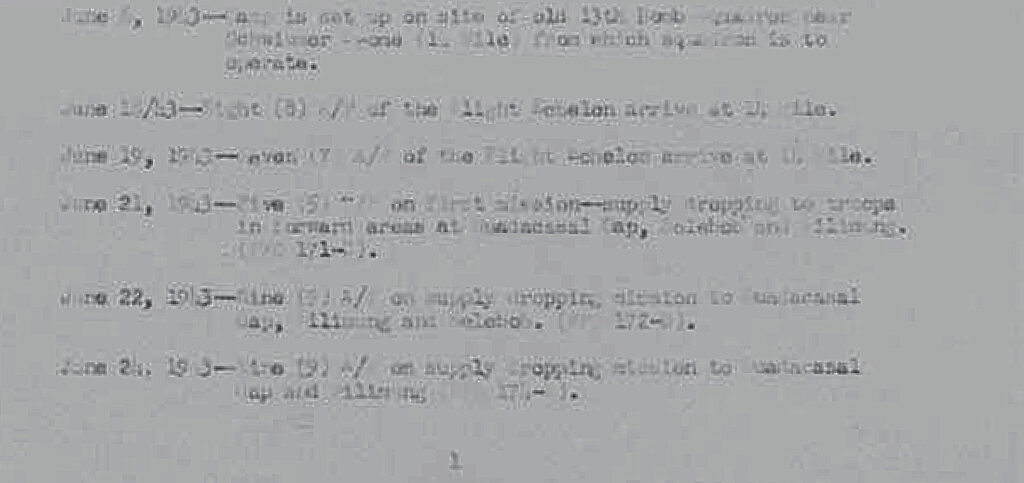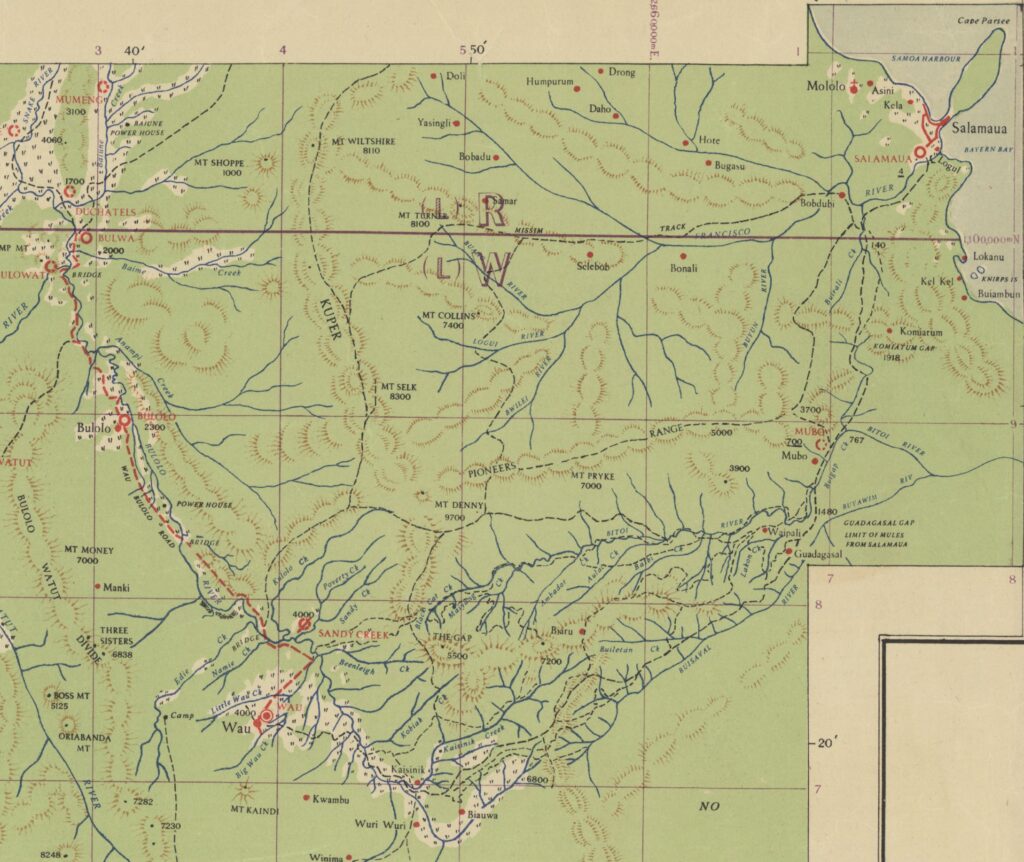Interactive map of the earliest missions of the 501st Bomb Squadron in New Guinea during 1943. White dots indicate locations in the mission area and orange dots indicate a supply drop. Popups provide additional information.
The historical documentation I have for the 501st Bomb Squadron of the 345th Bomb Group never seemed like it was complete, especially early during their time overseas and then again near the end of the war. In trying to reconcile the number of missions flown by one of their airplanes, I found that the fuselage scoreboard had more missions that I could account for.
In scanning through a recent acquisition of bomb squadron official histories, (microfilm reel A0625 from AFHRA, Maxwell AFB) I found a day by day summary of the activities of the 501st Bomb Squadron during the May to December 1943 period. I knew that they were in New Guinea by mid-1943, but lacked a precise date, and this newfound history adds their first ten missions to their mission log, with their first mission being on June 21, 1943. After adjusting the lighting of the image in photoshop, a marginally readable document emerged.

Nine of the missions were supply drops to Allied ground troops operating between Salamaua and Wau on the coast of New Guinea. The tenth was a convoy escort patrol, probably performed over the waters off Port Moresby. Finding the villages and locations where the supply drops were made taxed my map resources, but I was able to find all but one of these obscure places. The one I could not find on any map was apparently some sort of Post, but I have no idea if it was an official place or a just a trading hut along a footpath. That mission was incomplete due to weather.

Many of the supply drops were made at the Guadagasal Gap. The Gap was a natural pass between two mountain ranges that were not quite connected. In the pre-war mining days, it had allowed a land route for supplies moving from the coastal town of Salamaua to the interior gold fields around Wau.
My thanks to the good people at AFHRA for taking the time to prepare and send these documents to me. There is so much information available, tucked away in obscure places, that finding it is often a matter of stumbling across it while searching for something else.
